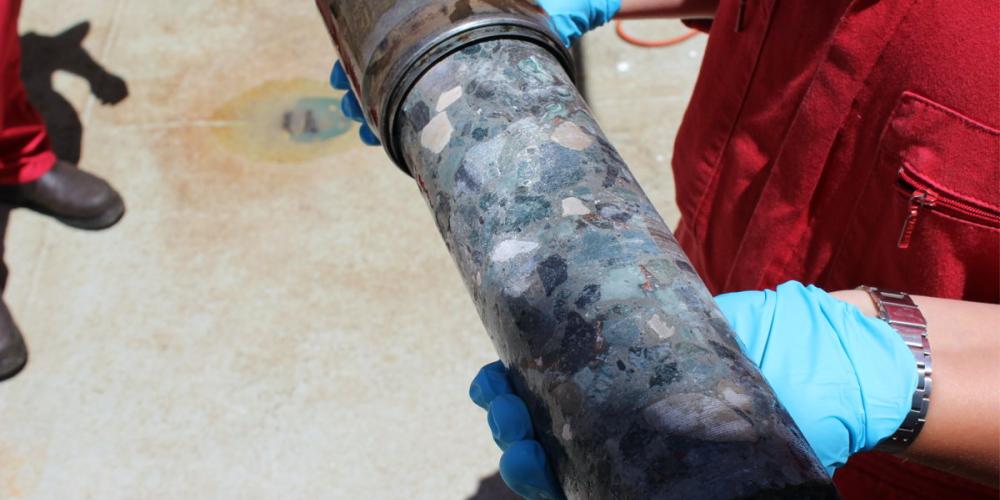
VUB PhD research has shed new light on what exactly happened in the seconds, minutes, hours and days after the Chicxulub meteorite impact, which marked the end of most of the dinosaurs on Earth some 66 million years ago. For his PhD, “Reconstructing the first moments after the Cretaceous-Paleogene boundary impact event: high-resolution petrography and geochemistry of proximal and distal Chicxulub impactites”, geologist Pim Kaskes of the VUB research group AMGC reconstructed the first moments after the impact using a drill core from the peak ring of the “dinocrater” in Mexico in 2016.
“The Chicxulub meteorite impact was one of the most catastrophic events in the history of our planet,” said Kaskes, who received his PhD at VUB on 26 April this year. “The impact triggered abrupt climate change and the Cretaceous-Paleogene mass extinction, responsible for the extinction of three-quarters of life on Earth, including non-flying dinosaurs. The massive environmental changes back then were most likely caused by large amounts of fractured, molten and evaporated rock from the impact site that was hurled like arrows into the atmosphere. However, the timing and exact mechanisms of these impact processes are not yet well understood and that is what I investigated in my thesis.”
The meteor struck a shallow sea 66 million years ago, creating a hole in the Earth’s crust almost the size of Belgium. “The impact itself was a matter of a split second,” Kaskes says. “My PhD actually starts at that crucial moment. We can hardly imagine it: a rock the size of the Brussels region being drilled into the Earth’s crust at the speed of a gunshot.”
What followed included hundreds of metre-high tsunami waves crashing against the shores of the land masses surrounding the impact crater. Kaskes’ main interest was in what happened when the 20km-deep impact crater, now buried under Mexico’s Yucatán peninsula, rapidly filled back up with surrounding rock and water, mud and debris from the Gulf of Mexico with tremendous force. The result was an accumulation in the crater of molten and fractured rock, called suevite, more than 100m thick. “Normally, it takes hundreds of thousands to millions of years to deposit such a thick layer of rock,” says Kaskes. “In this extreme case, the material formed within a day, most of it within minutes and hours of impact. To geologists, that is an incredibly short interval. As a result, as far as we know, the Chicxulub crater is the only place on Earth where we can see such a lightning-fast, large-scale geological process so clearly.”
In the drill core, the layer of suevite is succeeded by fine sediment enriched with soil debris from the nearest land masses. This must have flowed back into the crater by the tsunami waves that carried debris and sediment with them as they passed through on land and then turned back into the ocean towards the crater. On top of this lies a layer rich in the chemical element iridium, formed by the swirling of very fine dust some 20 years after the impact. This layer is also recovered around the world and, according to previous VUB research, contains the passport of the meteorite that caused the impact.
“The Chicxulub impact is unique because it left behind a layer of ejecta, or impact material ejected from the crater, all over the world,” says Kaskes. “Not only dust rich in iridium, but also tiny glass balls of molten material called spherules. We have now recovered both iridium and spherules for the first time at the scene itself. The next step is to go to locations around the world to recover that same layer, analyse it with new techniques and compare it with our results from the crater. That way, we can understand even better what the dinosaurs had to endure in that immediate aftermath of the impact of the disastrous meteorite.”